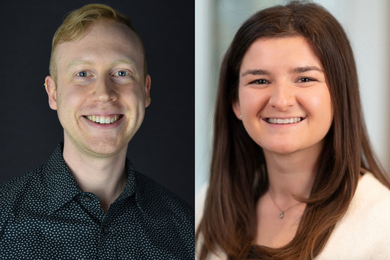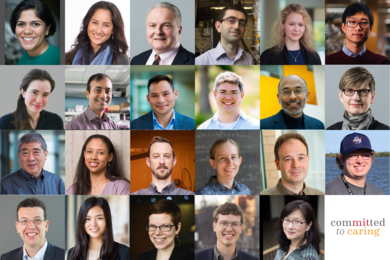Scientists from disparate fields of medical research, physical sciences and engineering gathered June 12 at MIT to discuss how to harness computational immunology to develop treatments for some of today's deadliest infectious diseases, including HIV/AIDS.
The Symposium on Computational Immunology was hosted by the Ragon Institute, established in February to find new ways to prevent and cure human disease by capturing the power of the immune system.
The purpose of the first major symposium hosted by the Ragon Institute reflected that of the institute as a whole: to bring together diverse disciplines, people, ideas and approaches to confront and overcome basic and applied challenges hindering the development of a vaccine against, as Professor Arup Chakraborty puts it, "scourges on the planet."
"In recent years, theoretical and computational approaches rooted in the physical and engineering sciences have ... shed light on basic questions in molecular and cellular immunology and host-pathogen dynamics," said Chakraborty, the Robert T. Haslam Professor of Chemical Engineering, Chemistry, and Biological Engineering and Ragon Institute team leader.
"[Our intention] was to make such synergistic theoretical and experimental research activities more vigorous by bringing together physical scientists, engineers, virologists and immunologists to think about the basic science that must be understood and harnessed for designing vaccination strategies against HIV and other infectious agents."
The institute is taking steps toward vaccine development, including development of a humanized mouse model to predict vaccine-induced immune responses in humans, determination of the effector function of immune cells at the single cell level, and multidisciplinary studies of individuals who control HIV without medication, as well as those with acute HIV infection.
Dr. Bruce Walker, an MGH physician-investigator and director of the Ragon Institute, believes another important step for the institute is to involve more MIT researchers, and to create a cadre of scientists committed to solving the AIDS problem at the cellular level.
"To prevent viruses from getting into cells or prevent progeny viruses from being produced, you can think about the various arms of the immune response: the innate immune response, the adaptive immune response involving antigen presenting cells, B cells making neutralizing antibodies, cytotoxic T cells, T helper cells. Part of the problem in the field has been that, until recently, these have been studied in 'silos,'" Walker said during his presentation, "Challenges and Opportunities in HIV Research." "There's been very little integration across these different aspects of the immune response in terms of trying to understand what's really going on."
Speakers from MIT, Stanford University, Los Alamos National Laboratory and Harvard University participated in the day-long meeting, which was broken into three major areas: basic immunology, the evolution of pathogens and antibodies, and HIV dynamics and vaccine design.
View the full schedule.





